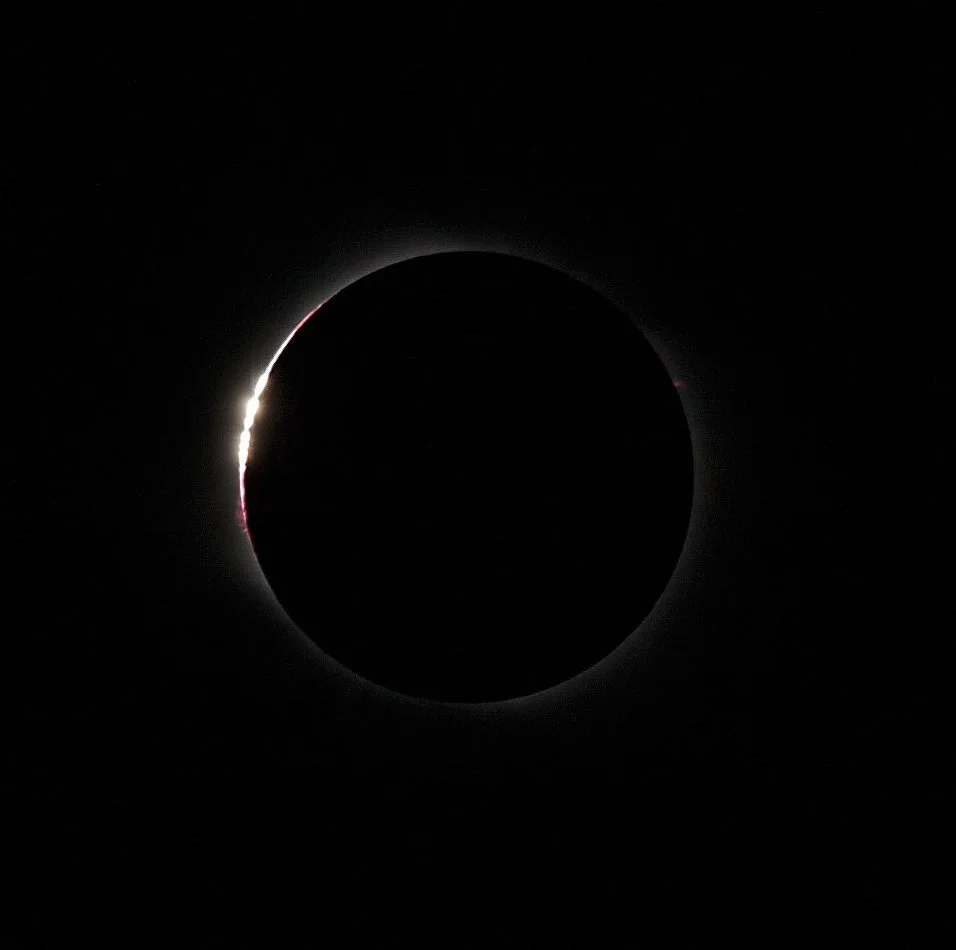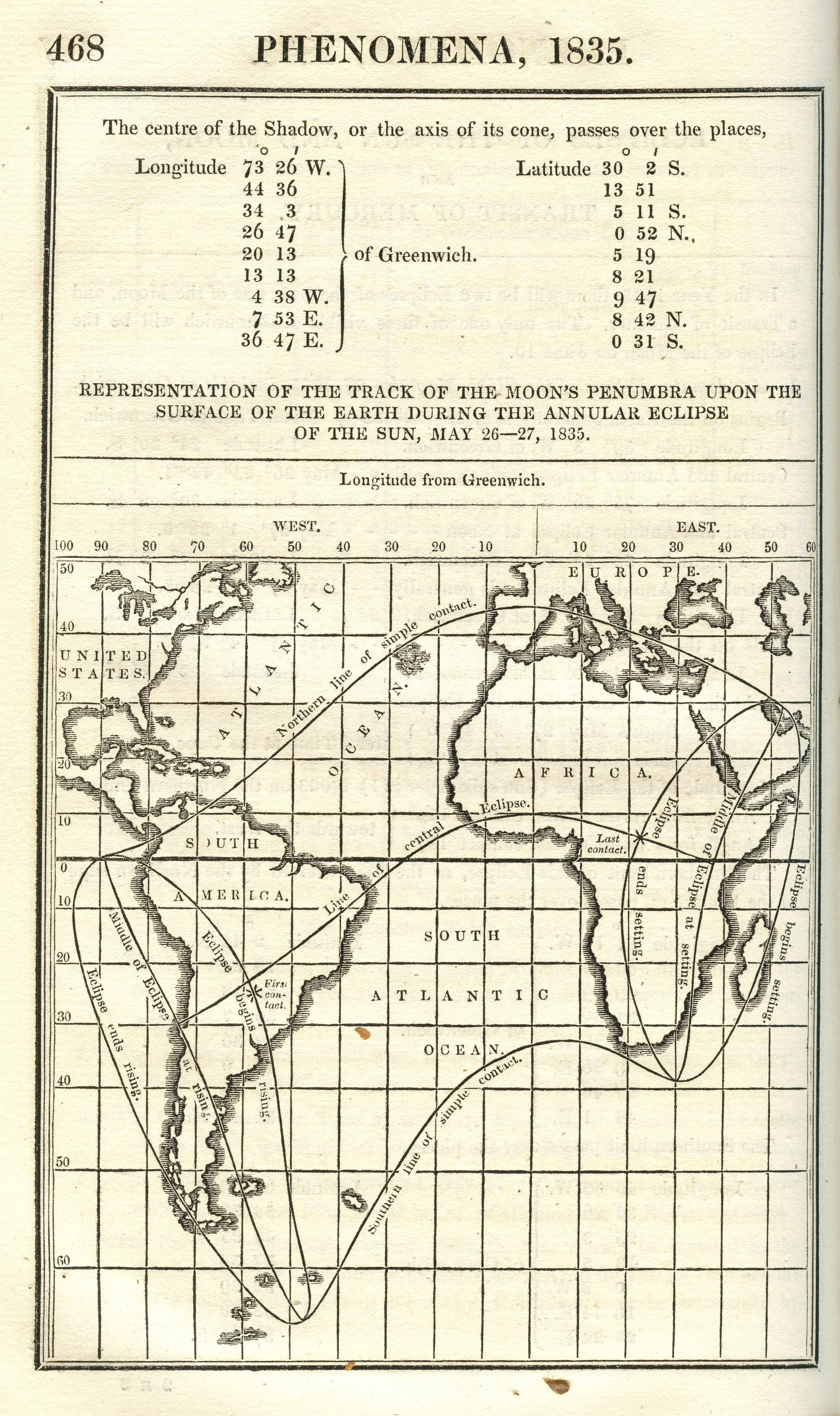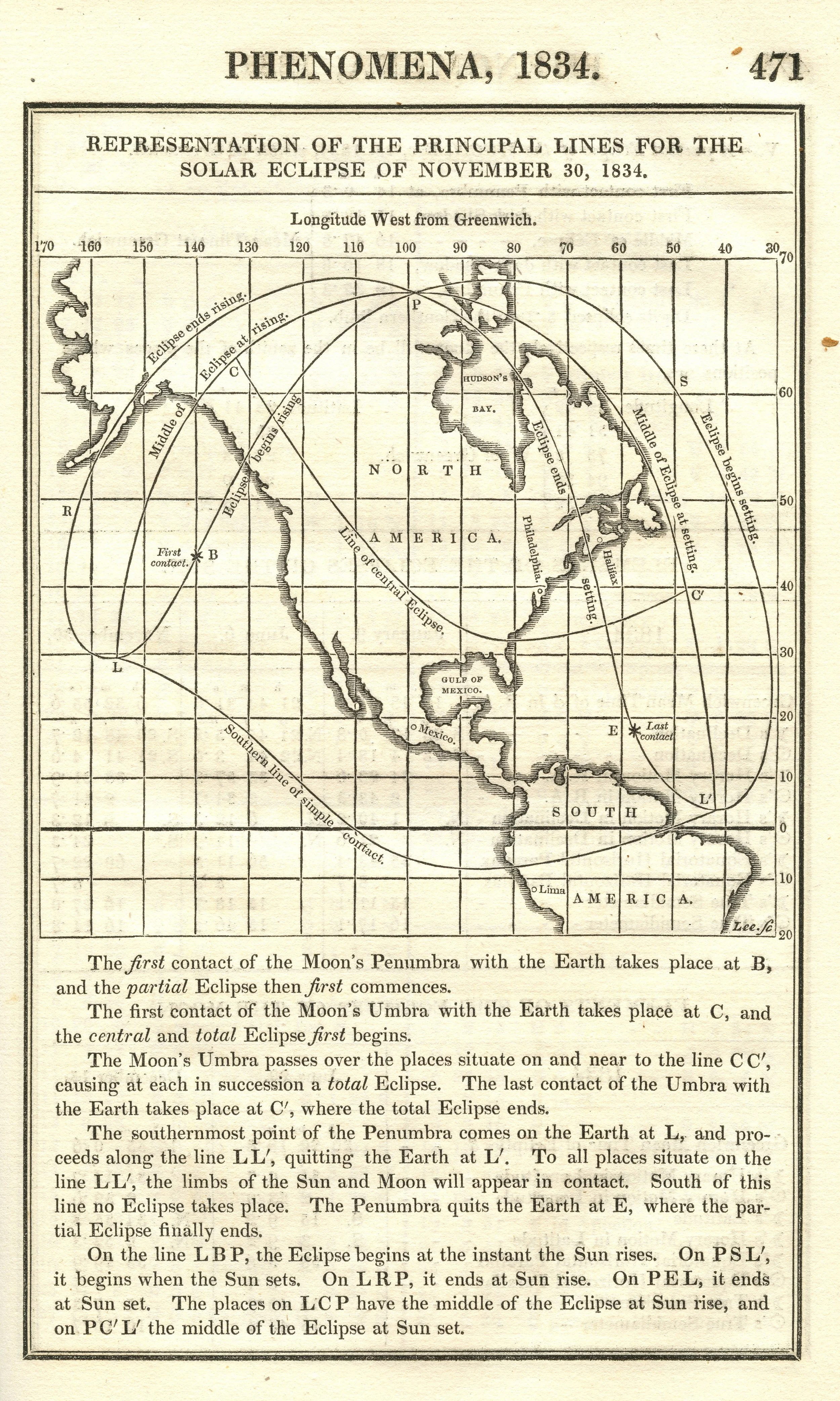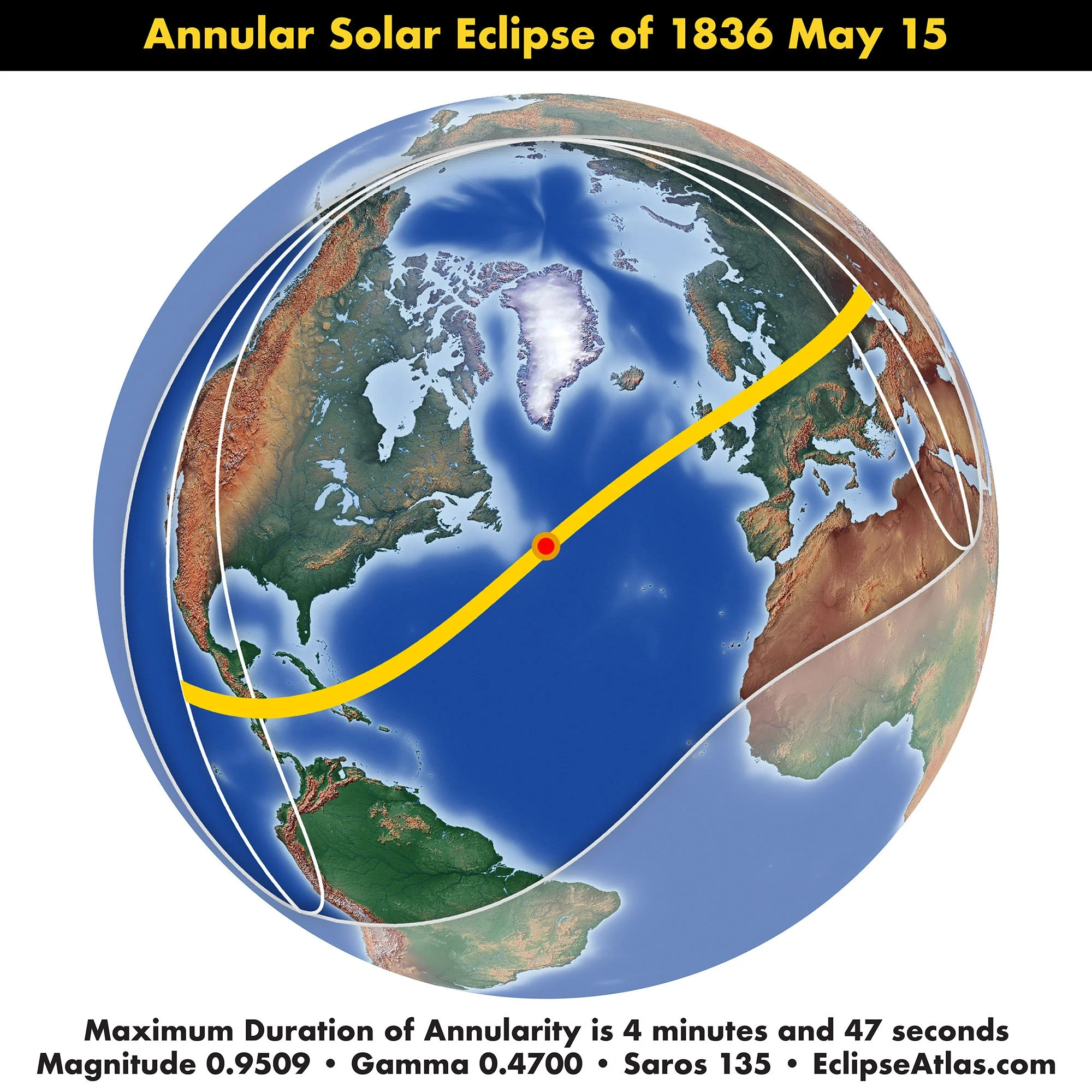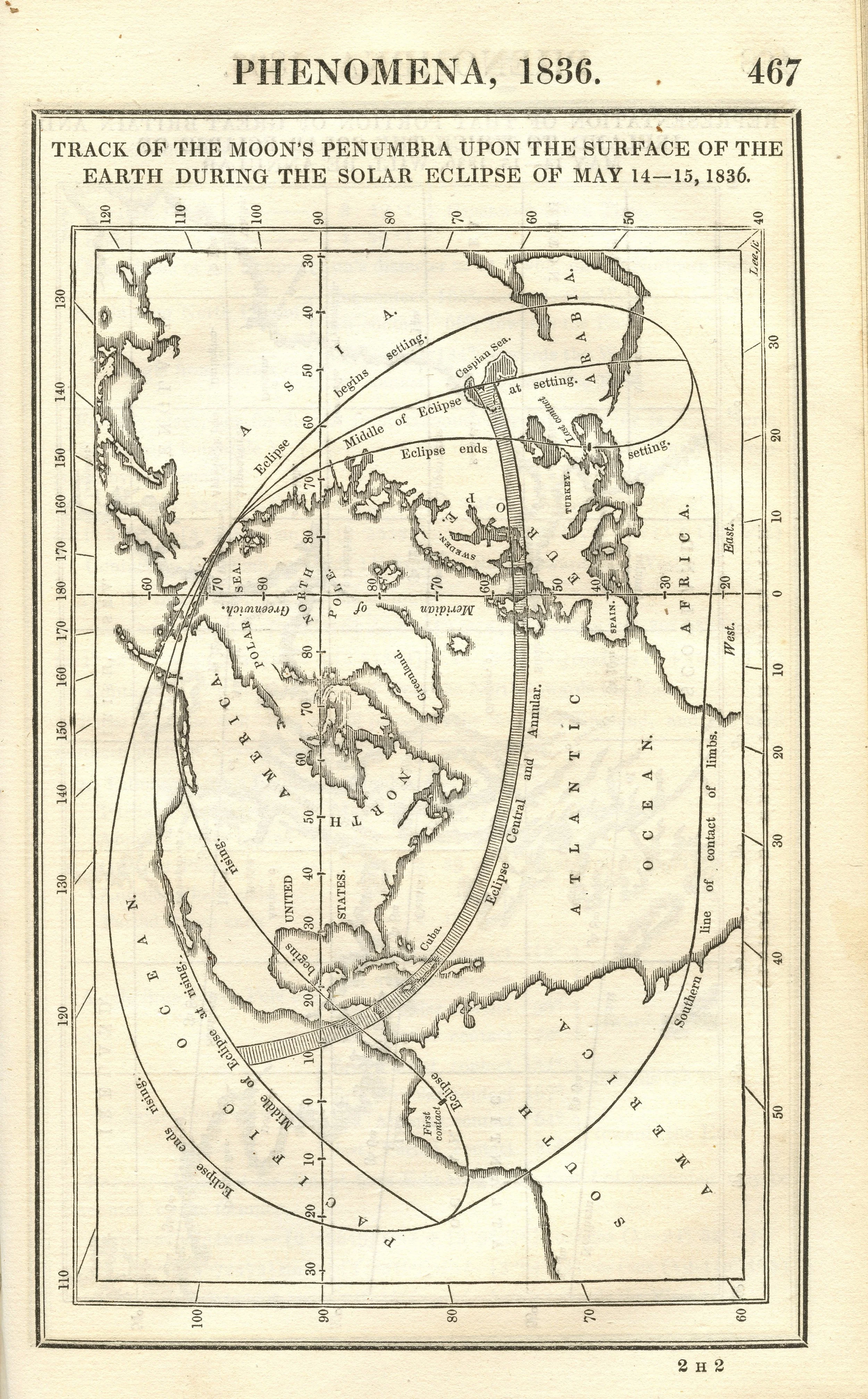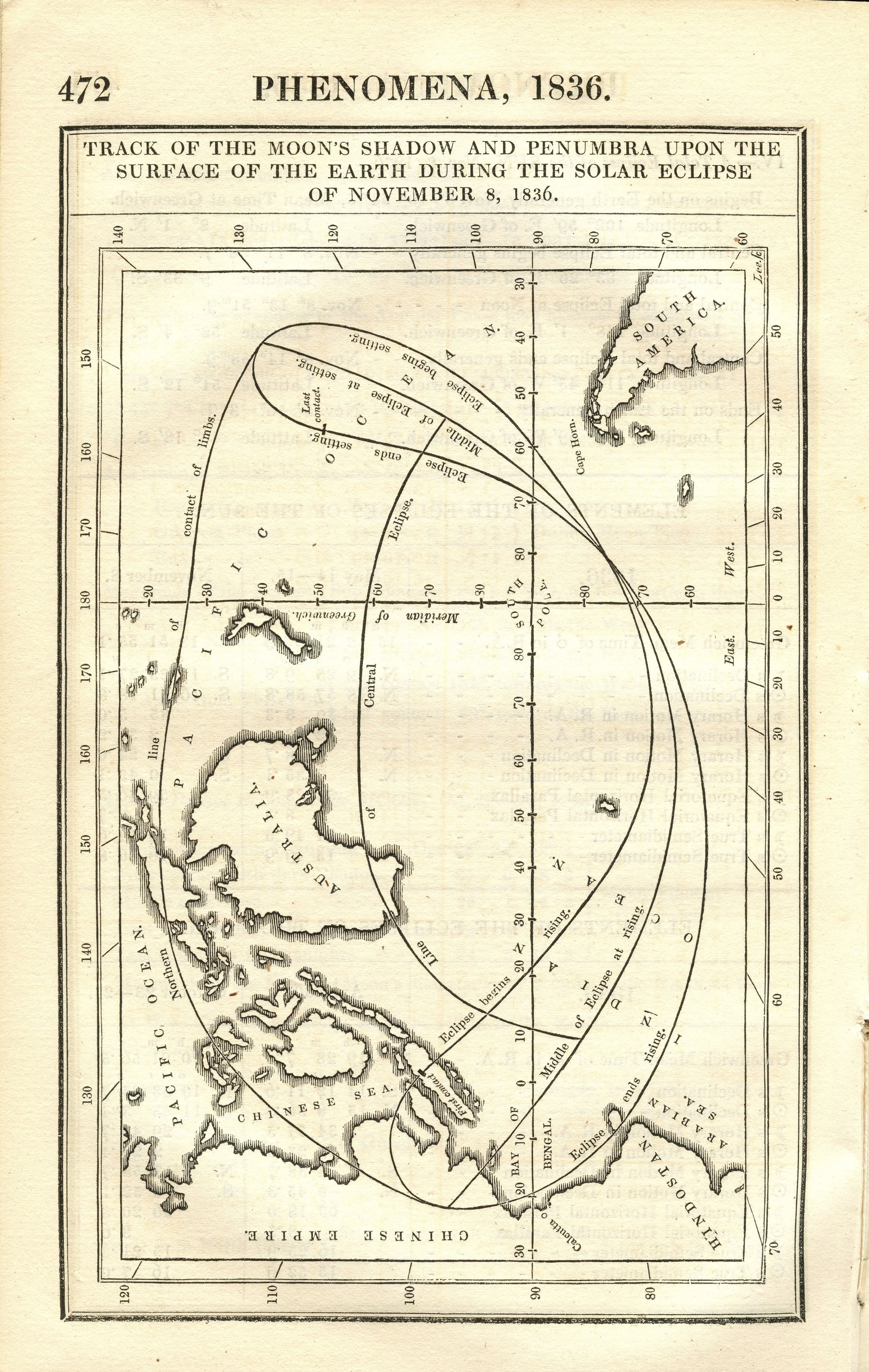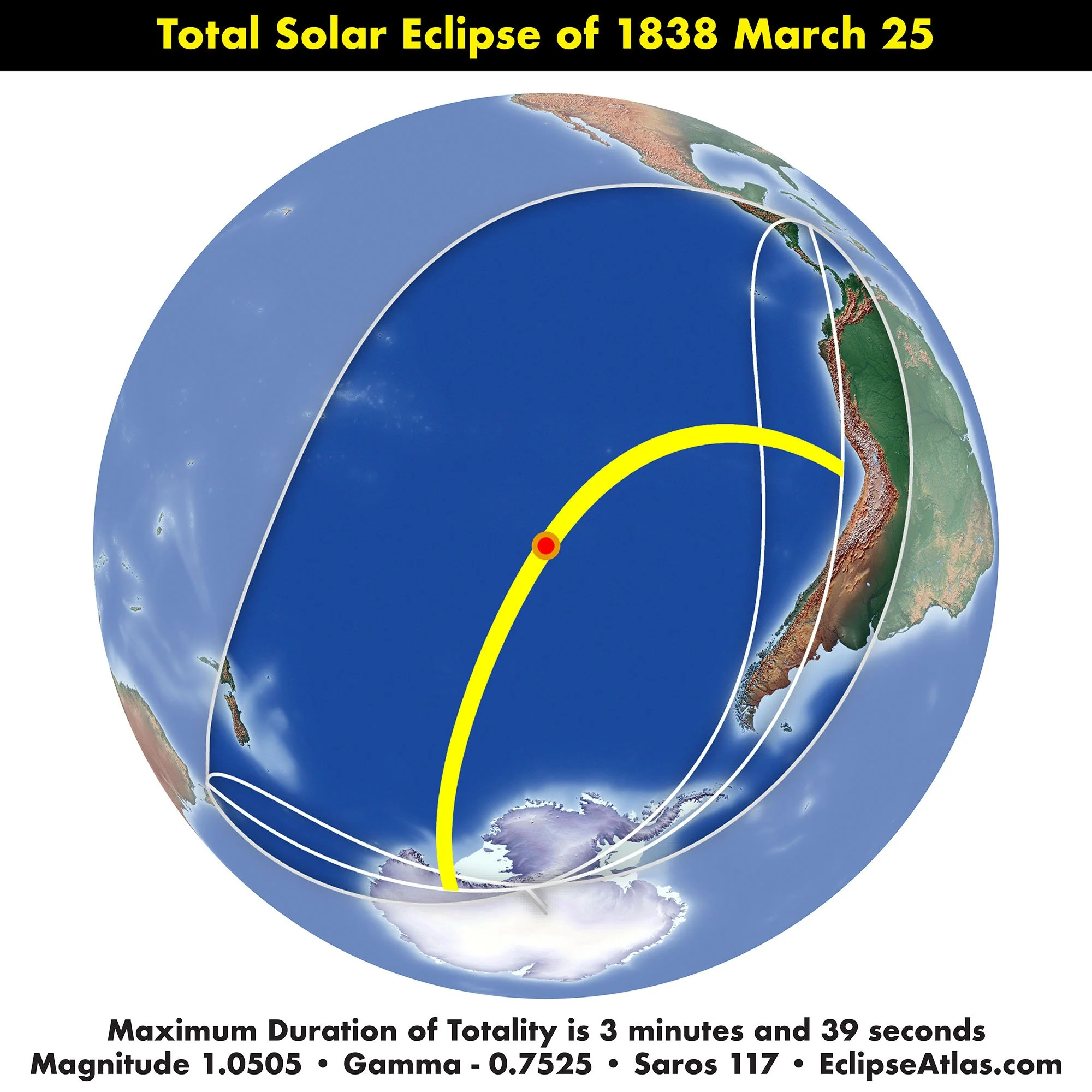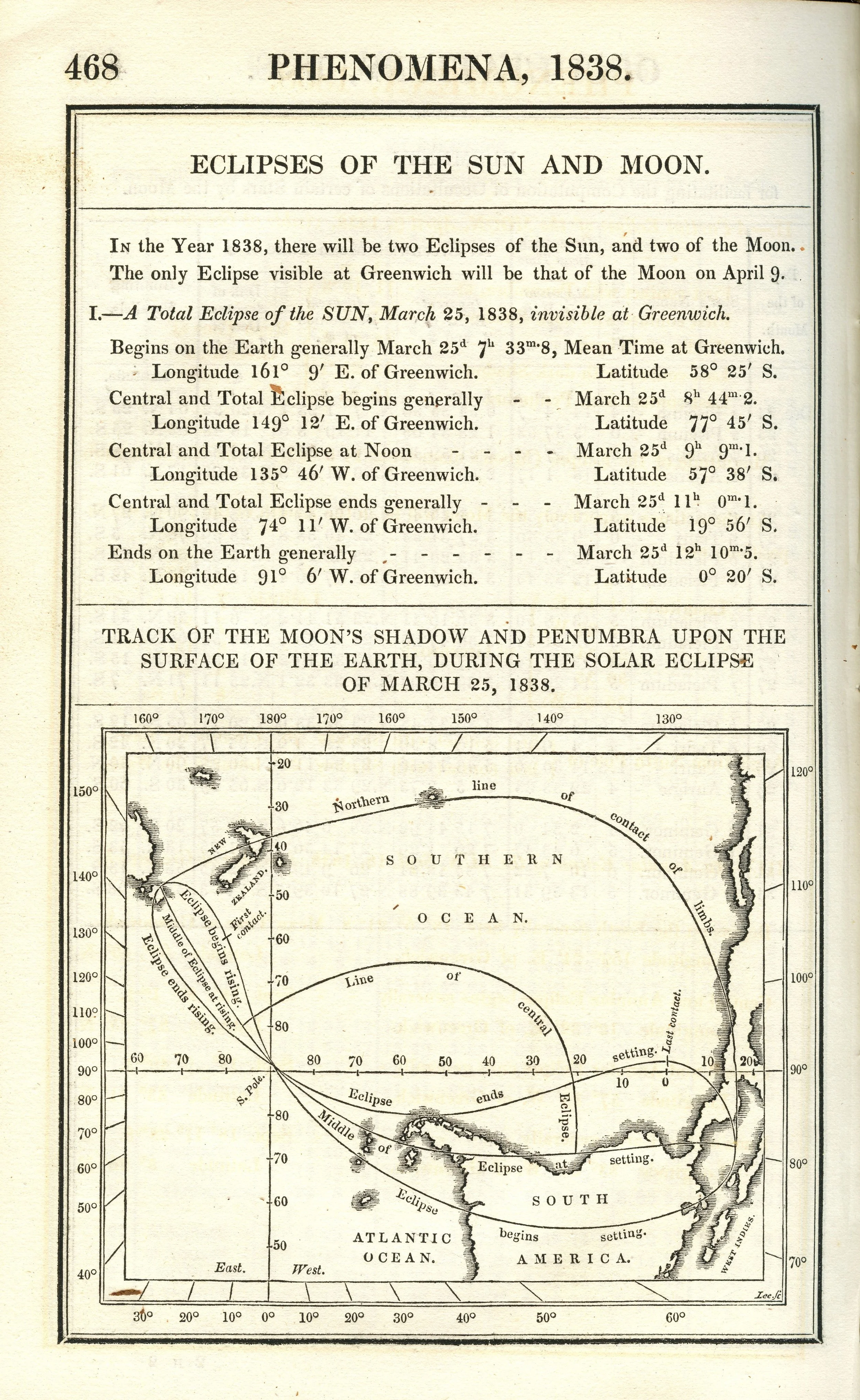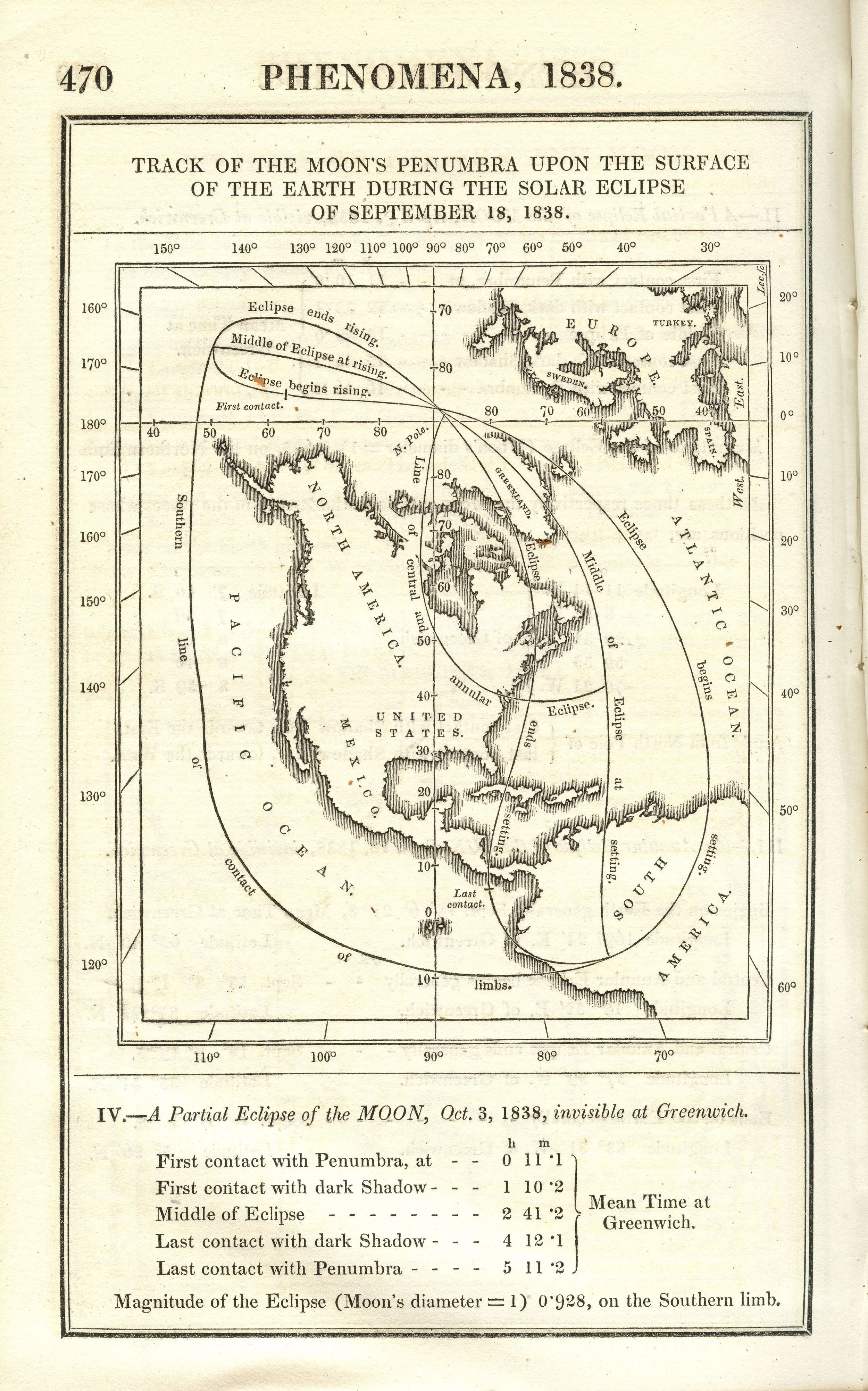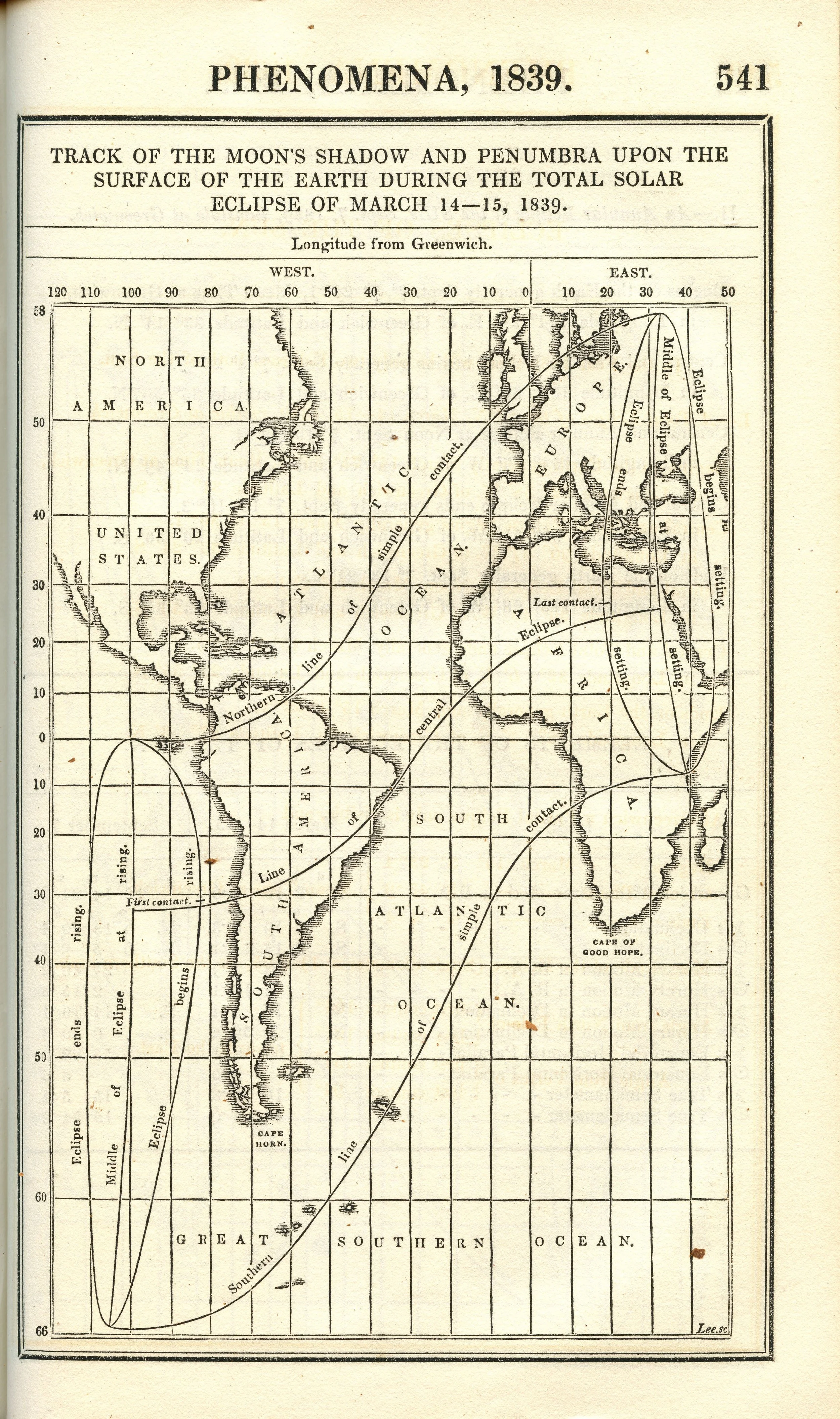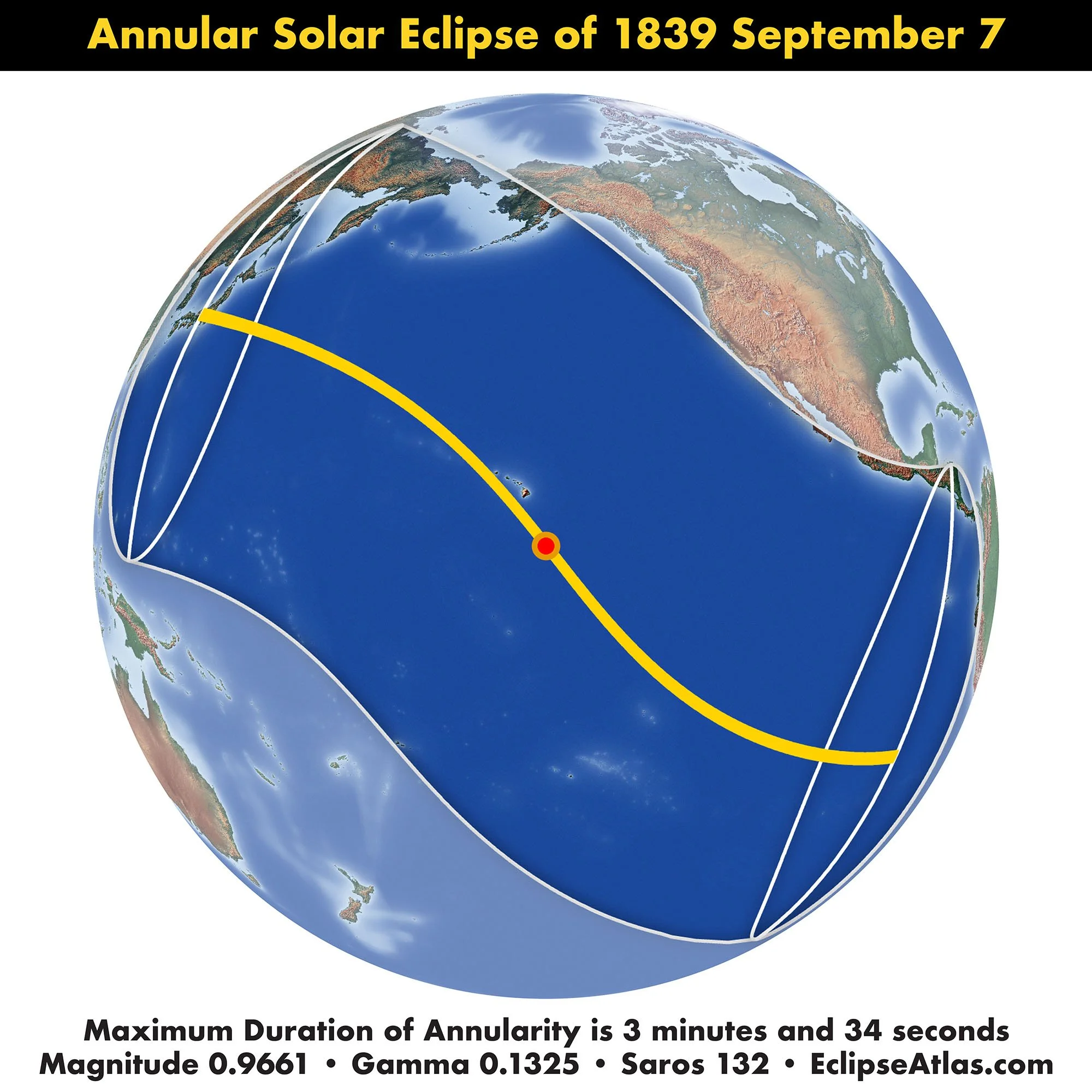Maps of Solar Eclipses from 1835 to 1839
During the annular solar eclipse of May 15, 1836, astronomy Francis Baily observed and recorded a curious phenomenon which we now call Baily’s Beads. The lunar surface is irregular with craters and mountains and during an eclipse, the gaps between these features on the limb of the Moon in silhouette will create brilliant bits of sunshine. Baily observed this effect and understood its cause.
You can read about Baily’s observations in a paper titled On a Remarkable Phenomenon that occurs in Total and Annular Eclipses of the Sun at https://articles.adsabs.harvard.edu/cgi-bin/nph-iarticle_query?bibcode=1838MmRAS..10....1B
Baily’s Beads is a striking effect seen when an annular or total solar eclipse is about to reach its fullness and was seen and described in earlier eclipses. Baily’s account was the first to describe this phenomenon in detail and today bears his name.
The Nautical Almanac and Astronomical Ephemeris Representation of theTrack of the Moon’s Penumbra upon the Surface of the Earth during the Annular Eclipse of the Sun, May 26-27, 1835. Scanned at the Federal Repository Library, UC Berkeley
The Nautical Almanac and Astronomical Ephemeris Representation of theTrack of the Moon’s Penumbra upon the Surface of the Earth during the Annular Eclipse of the Sun, May 26-27, 1835. Scanned by at the Federal Repository Library, UC Berkeley
Cassian Hallaschka Elementa Eclipsium Occultatio Solis per Lunam de 15 Maji 1830.
The Nautical Almanac and Astronomical Ephemeris Representation of that portion of Great Britain and Ireland, to which the Solar Eclipse of May 14-15, 1836, will be Annular. Scanned at Federal Repository Library, UC Berkeley
The Nautical Almanac and Astronomical Ephemeris Representation of theTrack of the Moon’s Penumbra upon the Surface of the Earth during the Solar Eclipse of May 14-15, 1836. Scanned at Federal Repository Library, UC Berkeley
Gerhard Reiner Fockens Manuscriptkaart voor de zichtbaarheid van de ringvormige zonsverduist Utrecht University Library http://hdl.handle.net/1874/33195
The Nautical Almanac and Astronomical Ephemeris Track of the Moon’s Penumbra upon the Surface of the Earth, during the Solar Eclipse of November 8, 1836. Scanned by at the Federal Repository Library, UC Berkeley
The Nautical Almanac and Astronomical Ephemeris Track of the Moon’s Penumbra upon the Surface of the Earth, during the Solar Eclipse of March 25, 1838. Scanned at the Federal Repository Library, UC Berkeley
The Nautical Almanac and Astronomical Ephemeris Track of the Moon’s Penumbra upon the Surface of the Earth, during the Solar Eclipse of September 18, 1838. Scanned at the Federal Repository Library, UC Berkeley
The Nautical Almanac and Astronomical Ephemeris Track of the Moon’s Penumbra upon the Surface of the Earth, during the Total Solar Eclipse of March 14-15, 1839. Scanned at the Federal Repository Library, UC Berkeley
The Nautical Almanac and Astronomical Ephemeris Track of the Moon’s Penumbra upon the Surface of the Earth, during the Annular Solar Eclipse of September 7, 1839. Scanned at the Federal Repository Library, UC Berkeley

